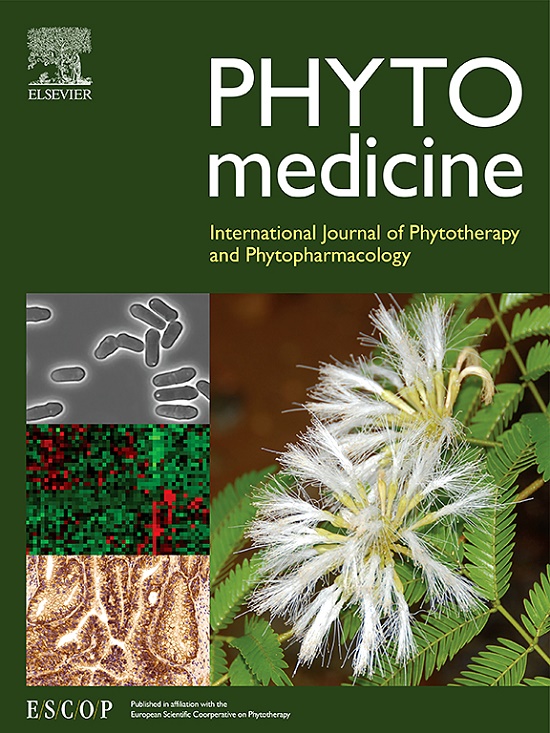Exploring the active components and potential mechanisms of Zhimu-Huangbai herb-pair in the treatment of depression
IF 6.7
1区 医学
Q1 CHEMISTRY, MEDICINAL
引用次数: 0
Abstract
Background
The Zhimu-Huangbai herb-pair (ZB) is commonly used to treat depression. Previous research has verified that ZB is effective as an antidepressant. Nevertheless, its active components and potential mechanism still require further elucidation.
Purpose
This study aims to analyze the compounds of ZB penetrating into the brain using UPLC-MS and investigate the potential mechanisms of ZB in the treatment of depression through in vivo and in vitro experiments.
Methods
The compounds of ZB that penetrate into the brain were identified using the UPLC-MS method. Network pharmacology analysis was employed to predict the therapeutic targets and mechanisms of the compounds of ZB in the brain for the treatment of depression. Subsequently, the molecular docking method was used to analyze the binding between active compounds and target proteins. Rat depression models induced by CUMS were used to investigate the impact of ZB on depression. Finally, the mechanism of ZB treatment for depression was investigated using the LPS-induced BV2 cell inflammation model.
Results
A total of 17 compounds were identified in ZB that crossed the blood-brain barrier (BBB). The network pharmacological analysis showed that the anti-depressant mechanism of ZB is closely related to inflammatory cytokines, including TNF and IL-6. Furthermore, KEGG and PPI analyses demonstrated that ZB regulates the microglia M1/M2 phenotypic polarization by modulating inflammation-related pathways. ZB was found to improve depression-like behavior in vivo. The molecular docking indicated that the compounds in ZB that penetrate into the brain have a strong binding ability to RELA and PPAR-γ. ZB inhibited the expression of p-p65 and increased the expression of PPAR-γ in the mPFC. By rebalancing the ratio of pro-inflammatory/anti-inflammatory cytokines, ZB was able to reduce neuroinflammation in the mPFC and hippocampus regions. The immunofluorescence results showed that ZB-containing serum reduced M1 polarization induced by LPS in BV2 cells.
Conclusion
This study reveals that ZB effectively alleviates depression by regulating the M1/M2 phenotypic polarization of microglial cells. The mechanism may be that the active compounds of ZB reduce M1 phenotypic polarization by inhibiting P65 and increase M2 phenotypic polarization by promoting PPARγ.

求助全文
约1分钟内获得全文
求助全文
来源期刊

Phytomedicine
医学-药学
CiteScore
10.30
自引率
5.10%
发文量
670
审稿时长
91 days
期刊介绍:
Phytomedicine is a therapy-oriented journal that publishes innovative studies on the efficacy, safety, quality, and mechanisms of action of specified plant extracts, phytopharmaceuticals, and their isolated constituents. This includes clinical, pharmacological, pharmacokinetic, and toxicological studies of herbal medicinal products, preparations, and purified compounds with defined and consistent quality, ensuring reproducible pharmacological activity. Founded in 1994, Phytomedicine aims to focus and stimulate research in this field and establish internationally accepted scientific standards for pharmacological studies, proof of clinical efficacy, and safety of phytomedicines.
 求助内容:
求助内容: 应助结果提醒方式:
应助结果提醒方式:


